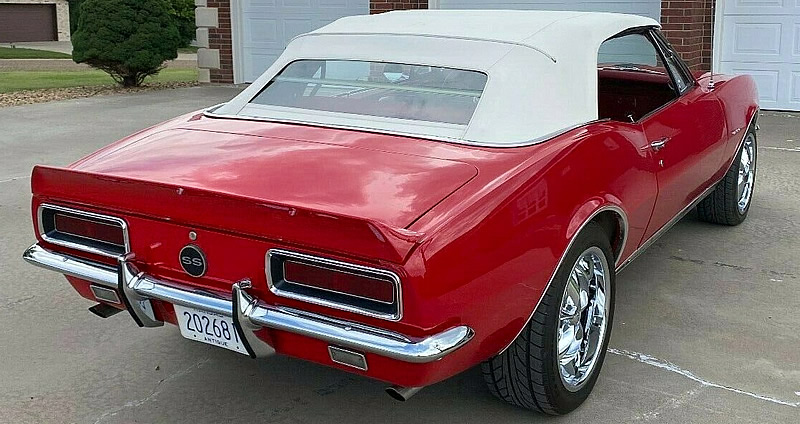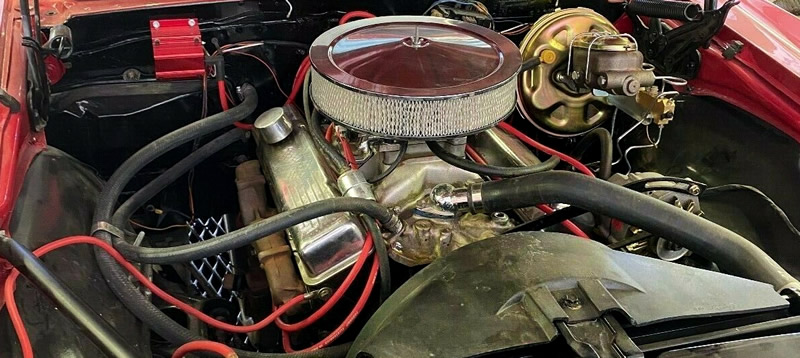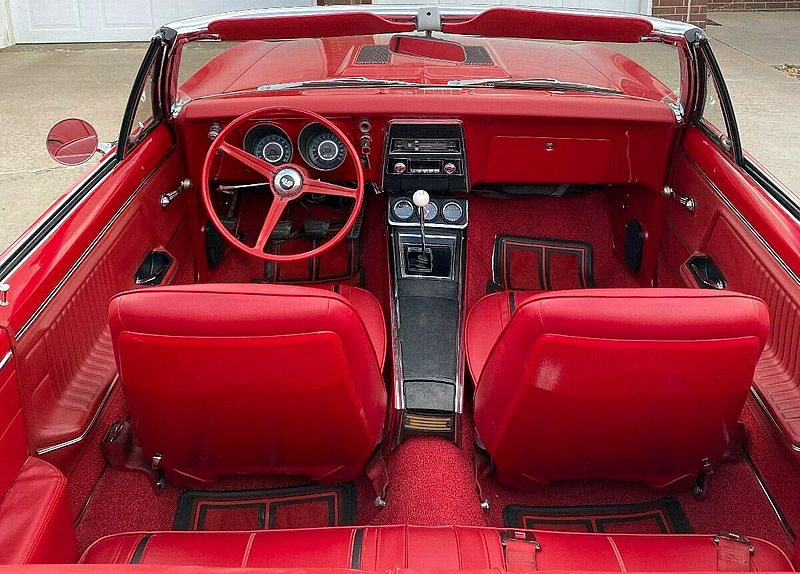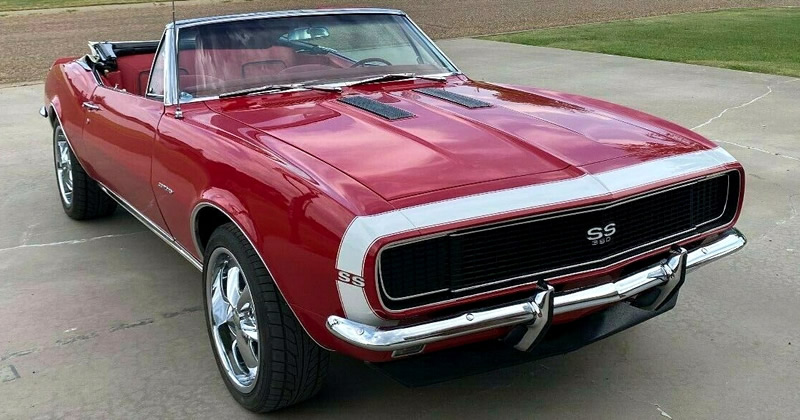Camaro was new for 1967 and was Chevrolet’s entry into the pony car wars. What they developed was a car that could be an affordable six-cylinder sporty looking ‘pretender’ or a serious high-performance package of excitement. What we have here is the latter equipped with both the SS and RS packages.
The base Camaro came with a 230 cubic inch six-cylinder engine producing 140 horsepower. You could also opt for a larger six at 250 cubic inches producing 155 horsepower.
The real fun started when you opted for the V8. A 327 Turbo-Fire was the standard V8 and would provide 210 horsepower. Upgrading to the SS package would get you the 295 hp Turbo-Fire 350 V8. You’d also get the ‘SS’ emblem on the fenders, ‘SS 350’ on the grille and gas cap, striped hood with non-functional scoops and bright body moldings on the sills.

Just like Ford did with the Mustang, Chevrolet encouraged you to personalize your Camaro with a multitude of options and configurations.
In addition to the SS package this Camaro was also optioned with the RS package effectively making it an RS/SS. While the name “Rally Sport” might lead you to believe it was a performance package, it is actually just a trim option. It gave you concealed headlights, parking lights mounted on the front valence, rocker molding trim and various emblems around the car. It is important to note however, that when the car had both the SS and RS packages the SS emblems would be used.
Under the hood sits the 350 V8 – although this one is not numbers matching.

Check out the interior. You’ll see the vinyl bucket seats (bench seats were an option) and the optional center console. This particular car started life with a standard interior but has recently been upgraded to deluxe.

SOME AVAILABLE CAMARO OPTIONS FOR 1967
| Option | Price |
|---|---|
| Air conditioning | $356 |
| Power steering | $84 |
| Power windows | $100 |
| Floor console with shifter | $47 |
| Courtesy lights | $4 |
| Strato-ease headrests | $53 |
| Tinted glass (all windows) | $31 |
| Push-button radio | $57 |
| Push-button radio with rear seat speaker | $71 |
| Stereo tape system with 4 speakers | $128 |
| Comfort-tilt steering wheel | $42 |
Chevrolet produced 25,141 Camaro Convertibles for 1967. They had a base price of $2609 for the six cylinder and $2,704 for the base V8. 19,856 V8 convertibles were made. The SS package would have cost you $210.65 – a total of 29,270 were ordered but this is across both hardtops and convertibles. The RS package also cost $105.
This 1967 Camaro is currently for sale on eBay. (follow the link for lots more photos)

